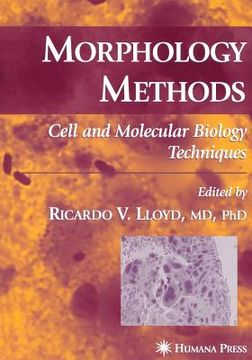Share
morphology methods: cell and molecular biology techniques
Ricardo V. Lloyd
(Illustrated by)
·
Humana
· Paperback
morphology methods: cell and molecular biology techniques - Lloyd, Ricardo V.
£ 128.56
£ 142.84
You save: £ 14.28
Choose the list to add your product or create one New List
✓ Product added successfully to the Wishlist.
Go to My WishlistsIt will be shipped from our warehouse between
Tuesday, July 09 and
Wednesday, July 10.
You will receive it anywhere in United Kingdom between 1 and 3 business days after shipment.
Synopsis "morphology methods: cell and molecular biology techniques"
The past several decades have witnessed an impressive array of conceptual and techno- logical advances in the biomedical sciences. Much of the progress in this area has developed directly as a result of new morphology-based methods that have permitted the assessment of chemical, enzymatic, immunological, and molecular parameters at the cellular and tissue levels. Additional novel approaches including laser capture microdissection have also emerged for the acquisition of homogeneous cell popula- tions for molecular analyses. These methodologies have literally reshaped the approaches to fundamental biological questions and have also had a major impact in the area of diagnostic pathology. Much of the groundwork for the development of morphological methods was estab- th lished in the early part of the 19 century by Francois-Vincent Raspail, generally acknowledged as the founder of the science of histochemistry. The earliest work in the field was primarily in the hands of botanists and many of the approaches to the under- standing of the chemical composition of cells and tissues involved techniques such as microincineration, which destroyed structural integrity. The development of aniline th dyes in the early 20 century served as a major impetus to studies of the structural rather than chemical composition of tissue. Later in the century, however, the focus returned to the identification of chemical constituents in the context of intact cell and tissue structure.
- 0% (0)
- 0% (0)
- 0% (0)
- 0% (0)
- 0% (0)
All books in our catalog are Original.
The book is written in English.
The binding of this edition is Paperback.
✓ Producto agregado correctamente al carro, Ir a Pagar.

